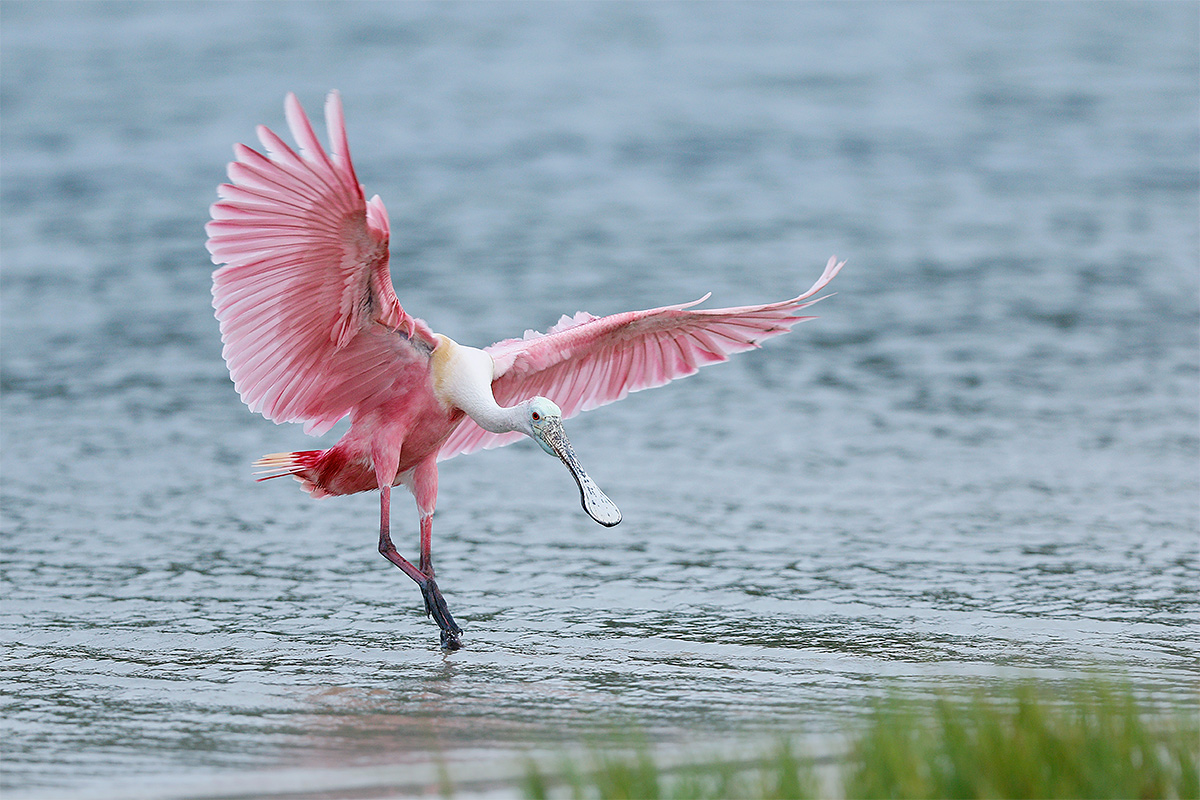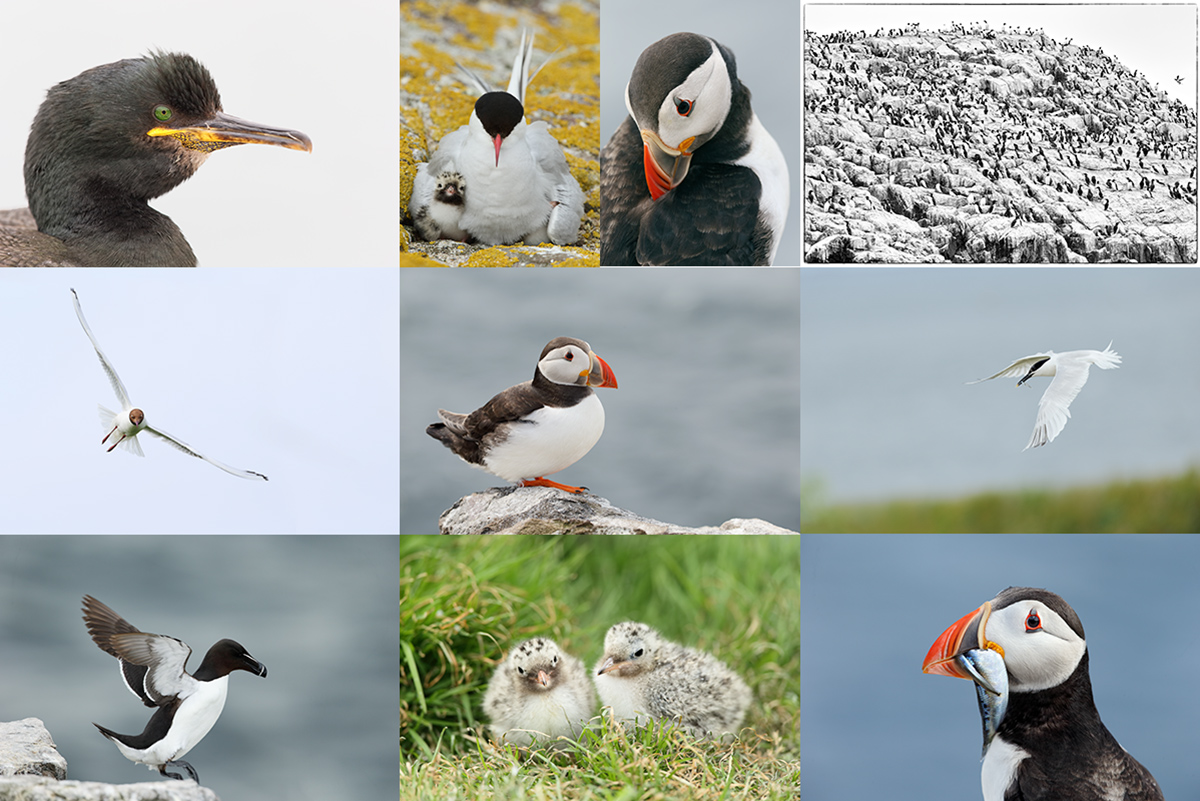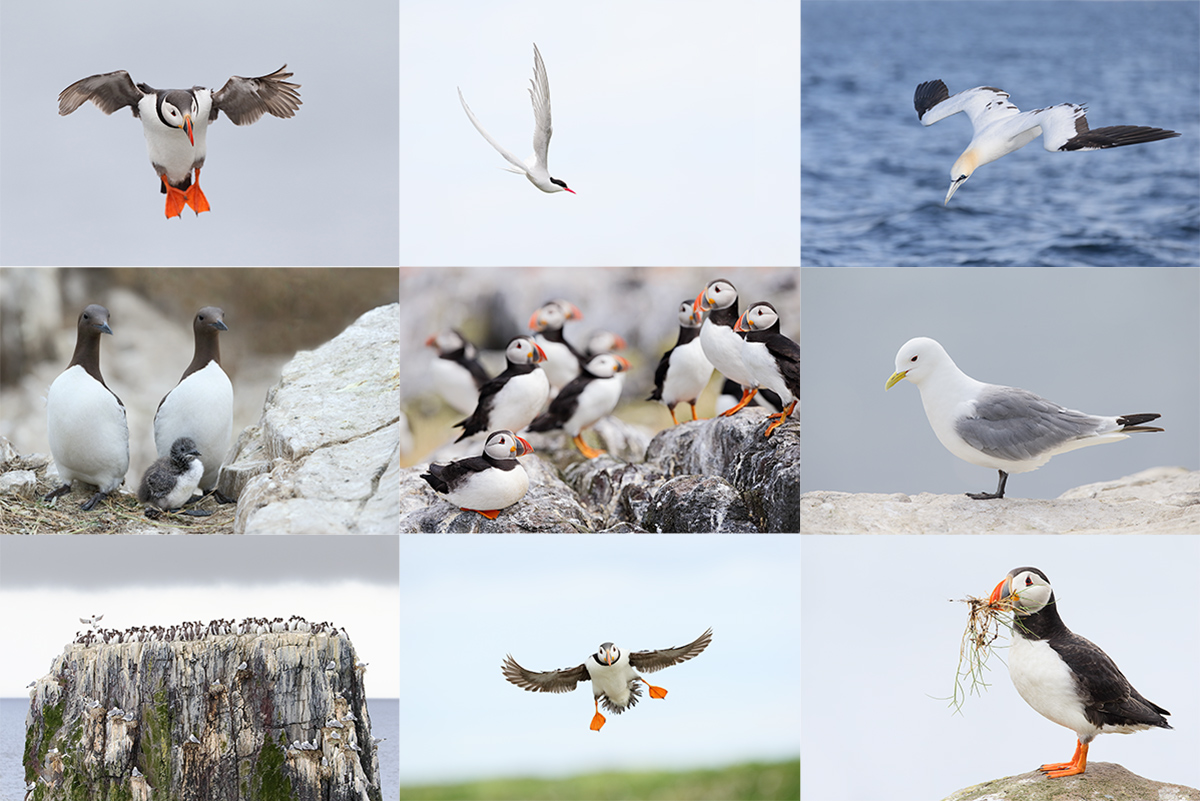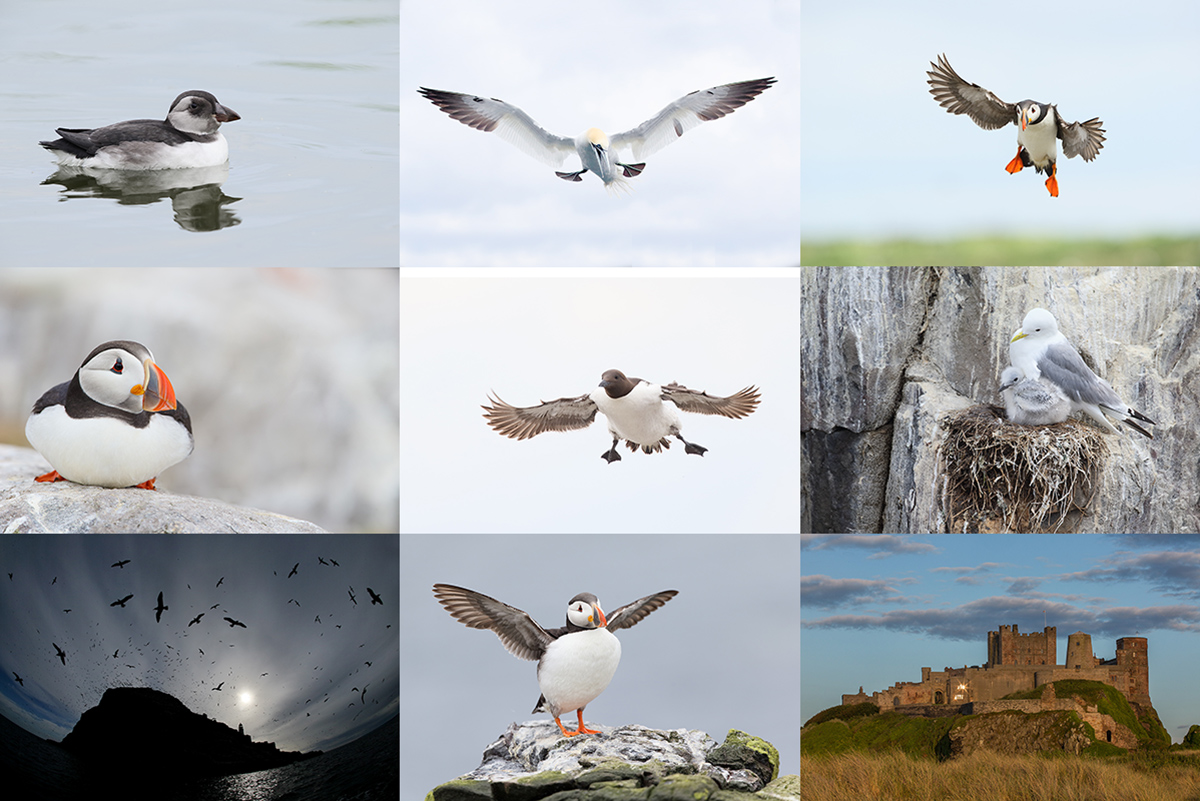Stuff
We enjoyed a lousy morning of bird photography as a west/southwest at 25+ mph sandblasted our eyes and had all the birds facing away from us and the light. Our sunny/hazy afternoon turned into a cloudy early evening; we enjoyed a great session with lots of bathing godwits, three totally tame spoonbills, and lots more.
For the first time in weeks, I was too tired to finish a blog post the evening before. With the forecast for stormy conditions and more morning west winds I decided to head to bed early and stay in on Monday morning. This blog post, the 109th in a row, took about 1 1/2 hours to prepare. It was published just before 5am on Monday morning.
The Palouse
Both Palouse IPTs are once again sold out.
UK Puffins and Gannets IPT
Two great leaders. Tons of puffins and birds of the sea and lots of learning. We have one slot open but could fit in a couple at a discount rate if they forsook the full day on the gannet boat. They would receive a discount and spend an extra day with the puffins. If there are any Brits who would like to join us for a day or two of puffin photography please get in touch. Pro-rated of course. If any of the above, please let us know via e-mail.
St. Augustine Alligator Farm Short-Notice Spoonbill and Wading Bird Chicks IPT: May 4-6, 2015. TWO FULL and TWO 1/2 DAYS: $1099. Limit 8/Openings 5.
Enjoy practically private instruction. Please call the office at 863-692-0906 for St. Augustine IPT Late Registration Discount info. For complete details see the blog post here and scroll down.


Canon’s Huge Megapixel Bodies
Many of you have read about the two new Canon 50+ megapixel bodies, the Canon EOS 5DS DSLR and the Canon EOS 5DS R DSLR. The two cameras look, sound, and pretty much are quite similar. I have withheld commenting until now because I did not have a good–heck, I did not have any–understanding of the single difference between the two bodies, that being the Low-Pass Filter Effect Cancellation.
If you missed the hugely popular “Canon’s Two New 50+ Megapixel Camera Bodies/You Must Read This Before You Buy,” you can click here to catch up and learn a ton to boot.
Please Remember to use our Affiliate Links 🙂
To show your appreciation for my continuing efforts here, we ask, as always, that you use our the B&H and Amazon affiliate links on the right side of the blog for all of your purchases. B&H is recommended for you major photography gear purchases, Amazon for your household, entertainment, and general purpose stuff. Please check the availability of all photographic accessories in the BIRDS AS ART Online Store, especially the Mongoose M3.6 tripod heads, Gitzo tripods, Wimberley heads and plates, LensCoats and accessories, and the like. We sell only what I have used, have tested, and can depend on. We will not sell you junk. We know what you need to make creating great images easy and fun. And we are always glad to answer your gear questions via e-mail. I just learned that my account was suspended during my absence; it should be up and running by Monday at the latest.
I would of course appreciate your using our B&H affiliate links for all of your major gear, video, and electronic purchases. For the photographic stuff mentioned in the paragraph above we, meaning BAA, would of course greatly appreciate your business. Here is a huge thank you to the many who have been using our links on a regular basis and visiting the BAA Online store as well.
|
This image was created on the last afternoon of the Fort DeSoto IPT while with the hand held Canon EF 300mm f/2.8L IS II USM lens and the Canon EOS 7D Mark II. ISO 640. Evaluative metering +2 stops as framed: 1/1000 sec. at f/what? in Manual mode. AWB. Click on the image to see a larger version. Center AF point/AI Servo-Surround/Shutter Button AF (right on the birds eye) as originally framed was active at the moment of exposure. Click on the image to see a larger version. Roseate Spoonbill landing |
Spoonbill Aperture Quiz
You get the picture. Conditions were borderline crappy. There was not much light. And it was late in the day. Take a close look at the EXIF data and let us know what aperture I set. Be sure to give us your reasoning. The evidence is there. Remember, by leaving a comment the blog becomes interactive and is more fun for all.
|
Images and card design copyright 2014: Arthur Morris/BIRDS AS ART. Click on the card to enjoy a spectacular larger version. |
The 2015 UK Puffins and Gannets IPT
June 29 through July 5, 2015: $5499: Limit 10 photographers/One opening due to a recent cancellation. Two great leaders: Denise Ippolito and Arthur Morris.
Here are the plans: take a red eye from the east coast of the US on 28 June arriving in Edinburgh, Scotland on the morning of Monday 29 June (or simply meet us then either at the Edinburgh Airport (EDI) or later in the day at our cottages if you are driving your own vehicle either from the UK or from somewhere in Europe. Stay 7 nights in two gorgeous modern country cottages.
There are 5 days of planned puffin/seabird trips—weather permitting, and 1 full day of gannet photography with 2 sessions on the boat.
|
Images and card design copyright 2014: Arthur Morris/BIRDS AS ART. Click on the card to enjoy a spectacular larger version. |
The Details
We will be staying in upscale country-side cottages that are beyond lovely with large living areas and lots of open space for image sharing and Photoshop lessons. The shared rooms are decent-sized, each with two roomy single beds and a private bathroom. See the single supplement info below.
All breakfasts, lunches and dinners are included. All 5 puffins boat lunches will need to be prepared in advance, taken with, and consumed at your leisure. I usually eat mine on the short boat trip from one island to the other. Also included is a restaurant lunch on the gannet boat day and a farewell fine dining thank you dinner. The cost of your National Heritage Trust is also included; that covers the twice a day landing fees.
Plan to fly home on the early morning of Monday 6 July or to continue your stay or travels.
|
Images and card design copyright 2014: Arthur Morris/BIRDS AS ART. Click on the card to enjoy a spectacular larger version. Scroll down to join us in the UK in 2015. |
Single Supplement Info
The single supplement is $1475. As we will be renting a third cottage the $1475 is due with your deposit and is also non-refundable.
If you are good to go please send your $2,000 deposit check now to save a spot. The balance will be due on March 29, 2015. Please make your check out to “Arthur Morris” and send it to Arthur Morris/BIRDS AS ART, PO Box 7245, Indian Lake Estates, FL, 33855. If you cancel and the trip fills, we will be glad to apply a credit applicable to a future IPT for the full amount less a $100 processing fee. If we do not receive your check for the balance on or before the due date we will try to fill your spot from the waiting list. Whether or not your spot is filled, you will lose your deposit. If not, you can secure your spot by paying your balance.
We do hope that you can join us.
Be sure to like and follow BAA on Facebook by clicking on the logo link upper right. Tanks a stack!
Support the BAA Blog. Support the BAA Bulletins: Shop B&H here!
We want and need to keep providing you with the latest free information, photography and Photoshop lessons, and all manner of related information. Show your appreciation by making your purchases immediately after clicking on any of our B&H or Amazon Affiliate links in this blog post. Remember, B&H ain’t just photography!
Amazon.com
Those who prefer to support BAA by shopping with Amazon may use this link:
Amazon Canada
Many kind folks from north of the border, eh, have e-mailed stating that they would love to help us out by using one of our affiliate links but that living in Canada and doing so presents numerous problems. Now, they can help us out by using our Amazon Canada affiliate link by starting their searches by clicking here. Many thanks to those who have written.
Typos
In all blog posts and Bulletins, feel free to e-mail or to leave a comment regarding any typos or errors. Just be right :).


















Haven’t read any of the comments above but I’ll take a stab at f8. Your exposure for white in sun is 1/3200 f8 ISO 400. Shade or cloud needs about 2 to 2 2/3 stop lighter. So 1/3200 to 1/1000 = +1 2/3. ISO 400 to ISO 640 = +2/3 Total +2 1/3 The whole image in general seems lighter than middle tone and there is just a little white. So +2 1/3 should be enough, therefore leave aperture at f8.
Hi again Artie.
That is such a great shot. I can’t believe we are all making such a meal out of the shot details.
I checked the sunny 16 rule and it says F 16 for sunny , ISO 100 shutter 1/100!
So your normal starting point for your test exposure is the same exposure as this using F 6.5 ISO 400 and 1/3200 shutter.
Its bright here today so I got my camera out and played with the settings.and indeed these two different sets of values give the same exposure value. At least within a third of a stop.
So my new deduction is this. Your exposure value should be roughly similar to the above rule for a cloudy day. I’m unsure weather we need to factor in the amount of over exposure you have dialled in above the cameras meter. Since it comes down to a hard number I thinks this might be a distraction.
Whatever, the rule gives ISO 800 1/1000 , f8. For cloudy.
Therefore at 1/1000, ISO 640 your camera meter gives you f7.1
Shooting + 2 EV above this would yield a value of f 3.6.
So now I have one leg on the boat, one on the dock and one in the water.
Someone needs to,save me soon.:-)
Regards
David.
My head is still spinning from the IPT. Thanks again Artie what an experience. That spoonbill you got is fantastic.
All of the bird seems to be razor sharp and I sense the grass was as well before you applied the blur technique plus the bird
Is landing or flapping and wings are sharp. I would say because of all those points
You used f9 to give lots of dof and still keep it sharp with 1/1000 shutter speed.
Thanks again for a great three days it was an awesome group and my wife and I met some folks who I’m sure we will be life long friends with, including
Of course yourself!
I will send some shots of you soon.
Cheers Lisa and Craig
Boy am I dumb. What does the posted jpeg size (from exif) 1200 × 800 have to do with anything? I don’t know the answer to the question, but I’m pretty sure the 7D2 crop sensor will effect the depth of field? Another question regards center AF point on birds eye was active so this image has been cropped to move the bird back to the left in frame?
As for the EXIF, I should have written that the answer is in the published EXIF data, that is the ISO and shutter speed… Yes to crop bodies increasing the d-o-f. As to the crop, you are exactly correct. a
Ok William,
You are in the company of many others . I’ve looked hard and still don’t know how to put together pieces in a logical explanation.
I think you are right about the slight crop on the left b/ c the birds eye is not in centre frame as displayed,however Artie says it is as framed.
My answer is instinctively that it should be f2.8. But why?
The conditions are described as borderline crappy. Does this describe the light at all or only.? Or is this meant to encompass the cloud cover, time of day , wind strength an direction all of which have a bearing on the final ” firing solution”.
Assembling the facts.
we are given 1/1000 and ISO 640
We know from the exposure triangle that these work together for a given exposure by one goes up and the other goes down so they balance each other.
Arties preferred shooting starting point in good light is 1/3200 , f6.3 and ISO 400.
Since he’s shooting in this instance with several stops slower shutter and going for a higher ISO , I think he has compromised on shutter speed( lower ) and ISO ( higher) . He has had to work hard to get a usable shutter speed for the flying bird even though it’s at its slowest just as its landing as it is here.
So putting aside the discussion on depth of field, I believe, in this situation I would go for wide open, F 2,8
If he used some other f stop he will let us know what and why in due course, and if it’s not 2.8 he will have a good reason and an even better explanation.
Cheers
David
Crappy was referring only to the light. Wind was pretty good and the birds were great. As for the rest it is amazing what happens when you consider all of the available information and put your thinking cap on…. Still withholding my comments for now 🙂
artie
I would say wide open at 2.8 because you had bad light and only adjusted ISO about 1/2 stop. The 2 stops different from your starting point only equal the 2 stops above the meter. But do not take into consideration the poor / cloudy light. That requires about 2 more stops which gets us back to wide open (2.8)!
Warren
Since it was borderline crappy light, you probably needed about two and 1/2 to three stops more than on a sunny day. Your starting rule of thumb for a sunny-day spoonbill, previously published in Bulletin #473, is iso 400, f6.3, 1/3200 sec. Going to iso 640 and dropping to 1/1000 gets you about two stops and you went evaluative +2 stops, so I would say f6.3 would get your needed exposure.
You gave it some thought but you and everyone else are missing some obvious considerations….
DOF for a 300mm lens at f/4 is about 5′ at 100 feet. Guessing the length of the Spoonbill in that range to be about the same and the birds body is in focus and foreground and background is out of focus, f/4 seems to be a pretty good guess.
I am not saying right or wrong but there is pretty much no need to guess 🙂 a
I would say F4 as both foreground and background are fuzzy indicating a shallow depth of field.
Artie,
You say take a look at the EXIF data because the answer is there. Hmm…
If the resolution is 1200×800 (the only EXIF data available), and you were starving for light in time of day and poor conditions, I’d say you are shooting at f/4, maybe even wide open at f/2.8.
There may be some blur selectively applied to the image, but if you were farther away, and you didn’t apply any blur accidentally to the Spoonbill wing, the tips are blurred. You’d probably need more light from the lens if you’re +2 stops exposure as well.
I’m a more experience-based learner, which is why I am coming to Nickerson, so apologies if you bluntly put this calculation out on a blog and it didn’t sink in.
Back on topic, distance guessed by your final image size (1200×800), blur on the bird, and need for light, I’ll make a decision and say wide open at f/2.8.
Crossing fingers,
Scott
Hi Scott, Ah, your comments get me to see where I might have mislead folks. I should have written that the answer is in the published EXIF data… Please note that I am withholding judgement on your answer…. artie
This has been killing me all day.
I’ve come to this conclusion based on your published ISO and shutter speed.
You were constrained at f/2.8 for light and needed to increase ISO until you reached your desired 1/1000 shutter speed.
Death is not an option! a
Looks overcast … I’d say f4 at hat ISO/shutter.
Why?
Largely because of the OOF vegetation in the foreground.
Good try but I selectively applied a Gaussian blur there with a Hide All mask and a soft brush. But that ain’t it. It was pretty well out of focus but I wanted to soften it up a bit. a
To,clarify my response, I guess f/4.
Why? a
i am in David Peake’s camp — both regarding the data on an iPad and with my guess on the aperture.
Best wishes.
Hi Artie ,
let me be the first to reply.
I have yet to learn how to view the EXIF data on my iPad .
However I’m picking that you are aiming to balance the need for speed with depth of field considerations.
So I vote for one of either wide open or more likely f4.
To me it looks like you are shooting in light that requires about four stops more exposure than a typical bright day.
Regards
David
There was a recent blog post on this very topic 🙂
a
ps: if I forget to remove the EXIF and you get the answer by looking at it that smacks of cheating and deprives both you and the rest of the gang from exercising their brains. Someone posted the answer based on the EXIF. I deleted the comment and wrote him asking him if he thought that that was cheating :). He apologized. I often remove the EXIF for quizzes but here I had to re-do the JPEG. Five minutes extra work 🙂
a
F8 – Basing it off the Sunny 16…well, at least trying 🙂
Doug
Ha Doug ,
You beat me to the punch.
I was thinking sunny 16 too. But too embarrassed to say so.
DP
If you were really thinking of Sunny 16 you should be embarrassed… You gotta read what I wrote 🙂
a